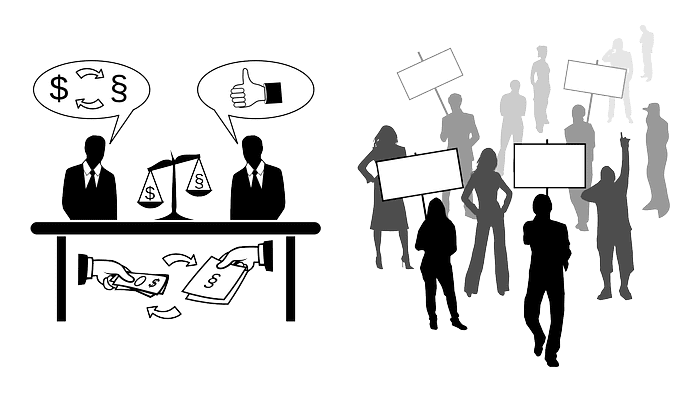Civil cases are unique in nature. However, most of them have common elements. Understanding the whole process—including the elements is important if you want to see your personal injury lawsuit succeed. Remember, not getting the process right can mess up your case. It can reduce your chances of getting the right compensation. Even worse, your case may be thrown out. That’s why you should understand all the steps involved. On those liners, here are the basic steps involved in a personal injury lawsuit.
Step One: Issuing Summons and Complaints
The complaint form is the first document to be filled after a car accident. Once you fill a complaint, the lawsuit commences immediately. You will be charged a small fee to file a complaint in a court of law. Depending on your state, you may be charged something like $30 to $300. In the complaint, you must fill in the following information:
- Personal information: The information of all the parties involved. This includes their identities.
- Legal basis—you will also be required to fill in the legal basis and the jurisdiction of the court. The court must have jurisdiction to handle your case.
- Legal claims—Legal claims should also be filled in the complaint form.
- At the end of the complaint form, you will come across a section known as a prayer for relief. The section explicitly explains your needs—particularly before a court of law. Here, a judgment will be entered against the so-called defendant. The amount of relief the defendant will be dependent on the judgment—also known as damages. It’s also important to note that you should inform the defendant about the defense and witness being used. This document is intended to fulfill an element known as summons. Summons are used to alert the defendant that he/she is being sued.
Remember, you must fill the complaint and summon with the court of law. Even more, you must serve the defendant with the summon. This is legally binding and is meant to satisfy the service of process. The process differs from one state to another. For instance, you cannot simply mail the complaint and summons using the address of the defendant in some states. You must deliver them in person. You must serve the defendant in the right way. The lawsuit can be dismissed if the judge finds sufficient evidence that you didn’t serve the defendant the right way. The process must be sufficient. Of course, you can refile your lawsuit. However, this will end up costing you extra money. Still more, your case can be affected by the statute of limitations. So, be clear and concise with the way you serve your defendant. Follow the due process. Don’t jump any step. Be patient. If the defendant isn’t available, come the following day. That’s the correct process of serving your defendant.
Step Two: Answer
After filing the complaints and serving the defendant summons, the respondent should respond within stipulated timelines. Depending on the court and the location, the defendant should respond within 21 days. The response from the defendant is known as the answer. In the answer, each paragraph should be addressed accordingly. Here, he/she will admit or deny the allegations.
The defense team will bring in various defenses when making the answer. He/she may give reasons why the liability doesn’t fall on his/her side. In some cases, explicit claims may be assessed. This is referred to as a counterclaim. Usually, the counterclaim resembles the complaint.
Step Three: The Discovery Step
The third step is known as the discovery stage. This follows after the initial pleadings. Remember, the initial pleadings include the complaint, summons, the answer, as well as a counterclaim. The discovery stage is all about obtaining relevant evidence. Here, all the parties involved should have adequate access to all relevant evidence. The case will be argued in court based on these pieces of information. The tools used include:
- Interrogations—Here, one party submits explicit questions. The other party is obliged to answer all these questions. This should be done under oath as well as in writing.
- Requests for production—Similar to interrogations, request for production involves asking for copies of all relevant documents. The documents must be relevant to the lawsuit. However, there are no asking questions during the request for production. All you are required to do is to request the other party to produce all relevant documents.
- Requests for admission—Both parties have a right to seek admission from each other. But the other party can deny the admission. It all depends on the circumstances and the nature of the request. Thus, be sure to understand what you can ask for during your request for admission. Get the material facts right.
- Depositions—During depositions, your attorney will ask the other party relevant questions. Here, interrogations will happen. Legally, the party being deposed should answer all the questions. This should be done orally. Plus, it should be conducted under oath. The court reporter will record the deposition word by word. This is for court records. The judge will go through the depositions later before making a determination of your case.
- Physical examination—The next phase is the mental and physical examination. Here, all parties will be examined physically and mentally. This is meant to ensure that parties are of sound mind to stand trial.
Step Four: Motions
Step four is known as motions. In this step, parties will request the court for a ruling or action. This step should be done before the actual trial begins. The court may elect to terminate the case. This is usually referred to as dispositive motion. On the other hand, a ruling that is based on the incidental question is known as non-dispositive motion.
Here are common motions associated with lawsuits:
- Change for venue
- Summary judgment
- Compel
- Default judgment
Step Five: The Pre-trial Negotiations Stage
The next step involves trails—which are mostly costly, time-consuming, as well as emotionally draining. That’s why an experienced lawyer will look for ways of settling the case before it proceeds to the full trial. Here are 3 ways to go about this:
Settlement—Settlements can be used once the discovery is completed. The lawyers can embark on a settlement discussion. This should include things like written offers, counteroffers, or lawyer-to-lawyer conversations. Both lawyers can hold conversations over the telephone.
Meditation—Meditation happens when both parties cannot agree during settlement. In this case, a mediator is called upon to help. The mediator should be a neutral party. The job of the mediator is to help the parties involved reach an agreement. The mediator shouldn’t use force. Instead, he/she will use diplomacy to help both parties reach an agreement.
Arbitration—Here, a neutral third party is selected through an adversarial proceeding. The arbitrator will be tasked with the responsibility of resolving the dispute. Depending on the evidence, the arbitrator will make a decision regarding the winning party. However, both parties will have an opportunity of presenting evidence and auguring their cases. If you elect to use binding arbitration, you have no legal right to appeal the decision/outcome of the case in any court of law.
Hiring Expert Witnesses
Before trial, you are required to assemble your witnesses. Here, you can bring any witnesses. Plus, you can hire expert witnesses. These experts will be used to build a strong case. They may include medical doctors, physiotherapists, and financial experts. However, these experts are expensive. They will cost you money. So, be practical about your case. Don’t over expect. Being practical will help you get the right compensation.
Step Six: Trial
The trail is one of the most important parts of any civil case—including personal injury lawsuits. Here, the judge will go through the evidence presented, examine the facts, before making a ruling. The ruling will depend on the evidence supplied. Thus, you should provide sufficient evidence to convince the judge into granting your prayers. Normally, a civil lawsuit should go through six main phases. The first phase involves selecting an attorney. The second one involves offering opening statements. This should be followed by taking witness testimony and cross-examinations. From here, the jury will offer closing statements and grant or reject your prayers. This should be followed by the jury’s instructions. Finally, the jury will give his/her deliberations and a verdict. The trail may last from, 1 to 7 days.
Step Seven: Collection of the Judgment
This is the most exciting step. Here, the judge will award you the damages. You will then go to collect your judgment. However, you will still need to incur some more expenses to undertake additional legal steps so that you can collect your final judgment. This may include discovering the other party’s source of income as well as assets. You may also have to garnish the other party’s wages. Finally, you will have to place an alien to the other party’s real property.
Step Eight: The Appeal Stage
If you are not in agreement with the ruling, you can appeal it. In this case, both parties are required to submit briefs in the court of appellate. Besides looking at briefs, the court will try reviewing the records of the lower courts. From here, it will issue its opinion. Here, the court may issue two rulings—uphold or find errors in the verdict.
Remember, these cases are lengthy in nature. They can also be complicated. That’s why you should partner with the right attorney to help you out. Get a lawyer who specializes in personal injury lawsuits. Choose an experienced attorney. Do your research and partner with an attorney who can guarantee you results.
How to Win a Personal Injury Lawsuit
Taking your lawsuit to court is one thing. However, winning it is another entirely new thing. That’s why you should have the right strategies to win your case. Remember, the defendant will try everything to bring your case down. Plus, lack of preparations can injure your case. So, if you want the best out of your personal injury lawsuit, consider employing the following practical strategies.
Hire A Reputable Attorney
Hire the right Personal injury attorney in El Paso, Texas. Look for an attorney with a proven track record. Experience matters. Do your research. Having the right legal team will boost your case.
Avoid Social Media
Don’t delve into any information regarding your case on social media. It can be used to bring your case down.
Preserve Evidence
The judge will deliver his/her verdict based on the evidence you present before a court of law. So, preserve all evidence. From taking pictures to having a copy of the police report, evidence will make your case strong.
Prepare Well
Prepare in advance. Be consistent with the information you give. Don’t contradict yourself. State the facts the way they are.
Have the Right Witnesses
Hire the right witnesses. From medical experts to eyewitnesses—having the right witnesses will boost your chances of winning your case.
Don’t Hide Facts from Your Attorney
Don’t hide anything concerning the case from your attorney. Remember, your attorney will build a case from what you tell him//her. So, tell him/her everything concerning the accident and the injuries you suffered. Hiding facts will complicate your case.
Don’t Admit Fault
Never admit fault. Leave it to the judge to determine who was at fault. Just keep quiet and let your attorney do everything.
Statute of Limitations
File your case in time. Don’t wait to file it at the last minute. Lawsuits are guided by timelines. Violating these timelines can see your case thrown out of court because of violating the statutes of limitations.
Tell Your Doctor Everything
Seek immediate medical attention. Tell your doctor how you feel. Your compensation will be based on the diagnosis and medications you receive. Thus, be transparent with your doctor
The Bottom-Line
Understanding the steps of a personal injury lawsuit will help you get the process right. From knowing how to gather evidence to filling the case, these steps are critical when it comes to the success of the lawsuit. The above steps will help you get it right as far as your personal injury lawsuit is concerned.



































